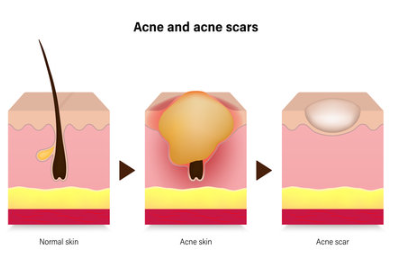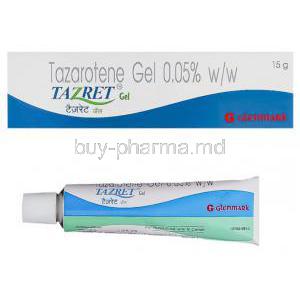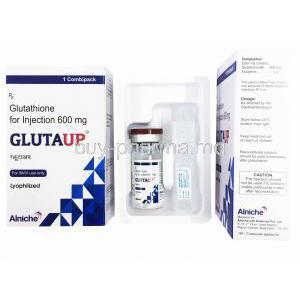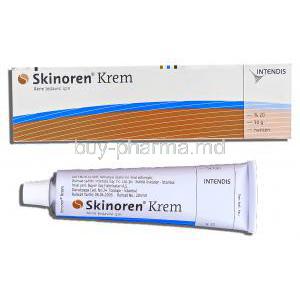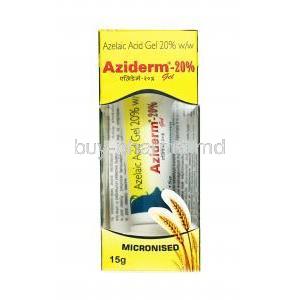Adaferin, Adapalene Topical Gel
- What is Adaferin (Adapalene Topical Gel)
- Composition of Adapalene Gel
- Mechanism of Action
- Uses of Adapalene Gel
- Off-Label Uses of Adapalene
- Dosage and Administration
- Side Effects and Adverse Reactions
- Important Precautions
- Specific Administration Considerations
- Handling Overdosage
- Storage and Handling Precautions
- Drug Interactions
- Warnings and Contraindications
- Conclusion
What is Adaferin (Adapalene Topical Gel)
Overview of Adaferin
Adaferin, also known as Adapalene Topical Gel, is a synthetic retinoid mainly used to treat acne vulgaris. What sets Adaferin apart is how it works. It focuses on changing how keratinocytes differentiate. Regulating cell activities helps prevent the development of microcomedones. This gel doesn't just stop at one action; it also has anti-inflammatory effects, which help lessen both the visible signs of acne and the inflammation beneath the skin.
.png)
Brief History of Adapalene in Dermatology
Adapalene first entered the field of dermatology in the 1990s as a type of retinoid that boasted improved stability and caused less irritation compared to earlier versions. Its evolution from being synthesized in a lab to becoming a player in treating acne highlights its effectiveness and reduced skin-related issues. Adapalene was created to bring about advancements in acne management, focusing on being well-tolerated to ensure more patients could benefit from it and stick with the treatment.
- 1991: Introduction into practice following extensive clinical testing.
- 1996: FDA approval as a therapy for acne vulgaris.
- After the 2000s: Ongoing research continues to demonstrate its usefulness in addressing dermatological conditions beyond just acne.
Scope of the Article
This article explores the details of Adaferin in dermatological treatment, focusing on its effects on skin health, therapeutic benefits, and patient outcomes after treatment. It aims to shed light on the aspects of Adaferin that support its use in modern dermatology.
Composition of Adapalene Gel
Active Ingredients
Adapalene gel contains adapalene as its component, a synthetic retinoid known for regulating the differentiation of skin cells in hair follicles, and has strong anti-inflammatory properties. The molecular structure of this compound is designed to combat acne while minimizing the risk of irritation, unlike previous generations of retinoids.
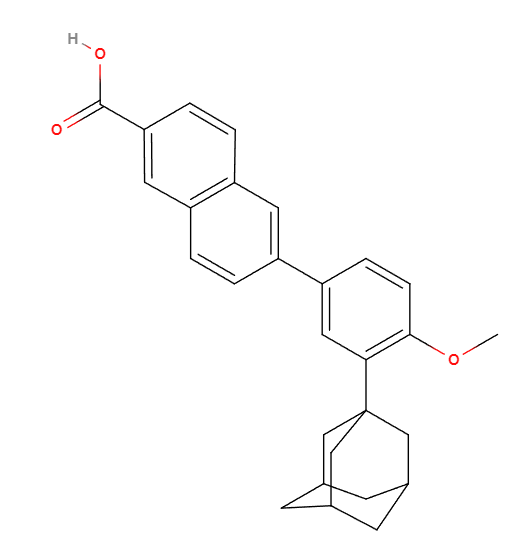
Inactive Components and Their Roles
The inactive components found in adapalene gel, such as carbomer, poloxamer, disodium edetate, and methylparaben, preserve the product's stability and effectiveness. These substances serve as thickening agents, stabilizers, and preservatives, maintaining the gel's texture and lifespan to enhance the therapeutic benefits of the treatment.
Variants and Formulation Differences
Adapalene gel comes in strengths, usually 0.1% and 0.3%, to address varying levels of acne severity. The 0.1% gel is often suggested for moderate acne, whereas the 0.3% version is designed for more severe cases, providing a more robust treatment option with corresponding tolerance levels.
Adapalene vs Tretinoin
Adapalene and tretinoin are both classified as retinoids. However, they differ in their chemical composition and how well they are tolerated by the skin. Adapalene is known for its ability to bind specifically to receptors, resulting in a higher level of selectivity and less skin irritation than tretinoin. Because of this, adapalene is often preferred for individuals with sensitive skin or those who are just starting to use retinoids.
Adapalene vs Retinaldehyde
Retinaldehyde is known to be a type of Vitamin A, unlike other retinoids, while adapalene is more stable and effective in targeting acne specifically. Retinaldehyde is commonly utilized for its aging benefits, whereas adapalene is favored for its significant impact on conidiogenesis and inflammation.
Adapalene vs Retinol
Adapalene and retinol serve dermatological purposes but vary in strength and potential for irritation. Retinol, a form of retinoid, is usually well received by the skin but needs to be converted into retinoic acid within the skin to work effectively, which might reduce its overall effectiveness. On the contrary, Adapalene works directly and vigorously, making it a better option for treating severe acne cases.
Adapalene and Benzoyl Peroxide Gel
Mixing adapalene with benzoyl peroxide in a gel form takes advantage of the strengths of both components. The antibacterial properties of benzoyl peroxide and its ability to eliminate skin cells work well with adapalene retinoid effects, improving the effectiveness of acne treatment and lowering the chances of developing antibiotic resistance.
Adapalene and Vitamin C
Combining gel with Vitamin C can boost skin wellness by merging the acne-fighting properties of adapalene with the antioxidant advantages of Vitamin C. This aids in skin rejuvenation and decreases sun damage.
Adapalene and Niacinamide
When niacinamide is paired with adapalene, it can work together to have an impact. This duo doesn't just tackle acne. It also enhances skin quality by calming inflammation and boosting the protective barrier.
Adapalene and Hyaluronic Acid
Combining adapalene with acid can reduce the dryness and irritation often linked to using retinoids. Hyaluronic acid, recognized for its moisturizing effects, helps keep skin hydrated, leading to the application and improved tolerance of adapalene.
Mechanism of Action
How Adapalene Works on a Cellular Level
Adapalene focuses on nuclear receptors known as retinoic acid receptors (RARs) found in the skin's cells. Its preference for these receptors' beta and gamma subtypes enables the adjustment of differentiation and keratinization processes. This specific method aids in regulating cell renewal and decreasing the likelihood of follicular blockage, which plays a crucial role in the development of acne.
Interaction with Skin Receptors
Adapalene's effectiveness is further enhanced by its ability to reduce inflammation. It interacts with skin receptors to dampen the pathways that cause inflammation. This adjustment leads to a decrease in swelling, redness, and discomfort, making adapalene an essential option for treating inflammatory skin conditions.
Comparative Effectiveness with Other Topical Retinoids
- Adapalene is known for being more stable and causing skin irritation compared to tretinoin making it a good option for those with sensitive skin.
- Its ability to target receptors enables a more precise approach to treating acne without the usual widespread irritation seen with other retinoids.
- Studies comparing the two have demonstrated that adapalene remains effective and safe with prolonged use, which is vital for managing chronic conditions like acne in the long term.
Uses of Adapalene Gel
Approved Dermatological Uses
Adapalene gel is mainly used to treat acne vulgaris. It has also been found effective for treating skin conditions involving keratinization issues. Additionally, its potent anti-inflammatory properties make it useful in the treatment of keratosis pilaris and similar skin conditions.
Effects on Acne Vulgaris
Adapalene gel works well in treating both inflamed and non-inflamed acne spots. It is especially good at decreasing the frequency and intensity of acne outbreaks, speeding up the healing process of pimples, and stopping new lesions from forming due to its ability to unclog pores and reduce inflammation.
Benefits for Skin Texture and Pigmentation
Using gel consistently can improve the texture of your skin and create a more uniform complexion. This product encourages the renewal of skin cells, reducing the visibility of pigmentation and unevenness on the surface, leading to more polished skin.
Adapalene for Wrinkles
Adapalene is commonly used to treat acne. It has also demonstrated potential in combating the effects of aging, like fine lines and wrinkles. Encouraging collagen production beneath the skin can enhance skin elasticity and firmness, ultimately diminishing the indicators of aging.
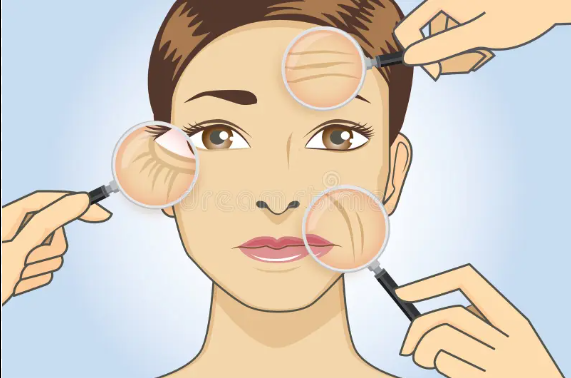
Adapalene Anti-Aging
Adapalene, a retinoid, helps renew the skin and can reduce the impact of sun damage and environmental factors, which are important contributors to early skin aging. Using it can also fade age spots. With continued use, it can give your skin a more youthful look.
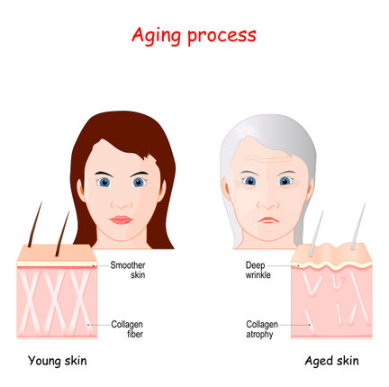
Adapalene for Stretch Marks
Adapalene might not be the solution, but it could improve the look of stretch marks by boosting skin renewal and enhancing the skin structure with increased collagen production.
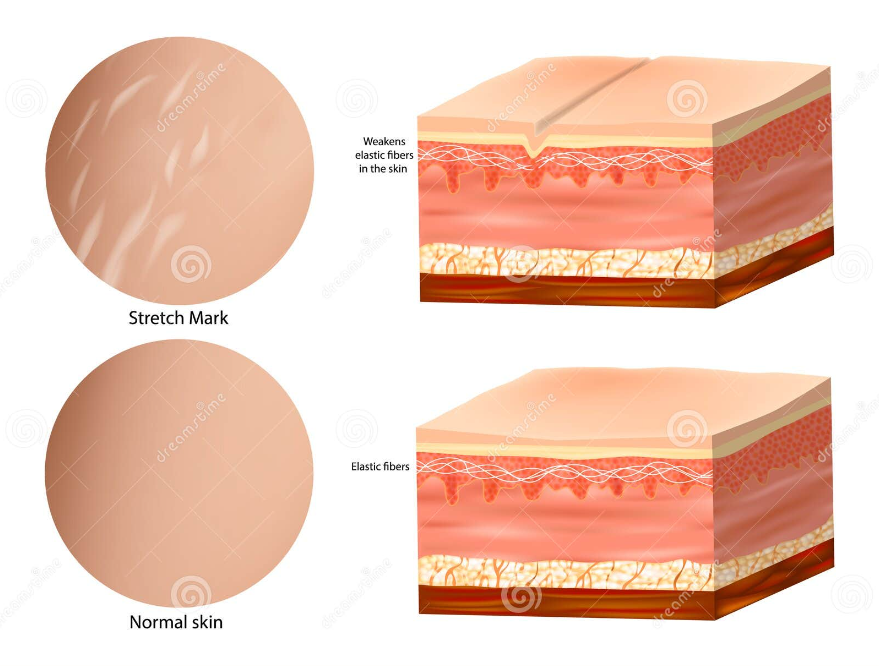
Adapalene for Acne Scars
Adapalene may help diminish scars by speeding up the turnover of skin cells. This rejuvenation process assists in replacing damaged skin with newer, less damaged skin over repeated usage cycles.
Adapalene Gel for Milia
Adapalene gels' exfoliating qualities can also aid in addressing milia, which are small cysts containing keratin. By accelerating cell renewal, they facilitate the removal of these cysts, leading to skin in a more efficient manner compared to various over-the-counter remedies.
Off-Label Uses of Adapalene
Emerging Research on Non-Acne Skin Conditions
Adapalene goes beyond treating acne; it also shows promise in managing various skin conditions. Recent studies suggest its effectiveness in addressing issues like alopecia areata, which can help reduce inflammation in hair follicles, and rosacea, which aids in managing redness and pimples.
Case Studies and Clinical Findings
- A recent research article in the Dermatological Journal discussed how adapalene has effectively alleviated psoriasis symptoms for more than 70% of the individuals studied, indicating a wider range of uses for this retinoid compound.
- Additionally, a study examined the application of adapalene gel on patients with keratosis pilaris, demonstrating its promise in improving skin smoothness and decreasing keratin accumulation.
Legal and Ethical Considerations
Using adapalene for purposes not approved by the FDA is based on evidence and early research findings. Healthcare professionals need to consider the legal and ethical implications. They should obtain consent from patients and explain both the possible advantages and risks. It's crucial that these treatments are carried out with a comprehension of the lack of FDA endorsement for conditions other than acne.
Dosage and Administration
Recommended Dosages for Different Conditions
The usual amount of adapalene gel used for treating acne vulgaris involves applying a layer to the affected skin once a day. The concentration is usually either 0.1% or 0.3%, depending on the acne's severity. When using it for purposes not officially approved, like keratosis pilaris or alopecia areata, the dosage and concentration might differ. They are usually kept lower to minimize irritation risk and tailored by a dermatologist according to each patient's specific needs.
Application Techniques for Optimal Results
To ensure results, it's important to apply adapalene gel to clean and dry skin. Use an amount typically equivalent to the size of a pea to cover your entire face. Remember to apply the gel while avoiding sensitive areas like the eyes, lips, and mucous membranes. It's recommended to apply the gel without rubbing to protect your skin and prevent any irritation.
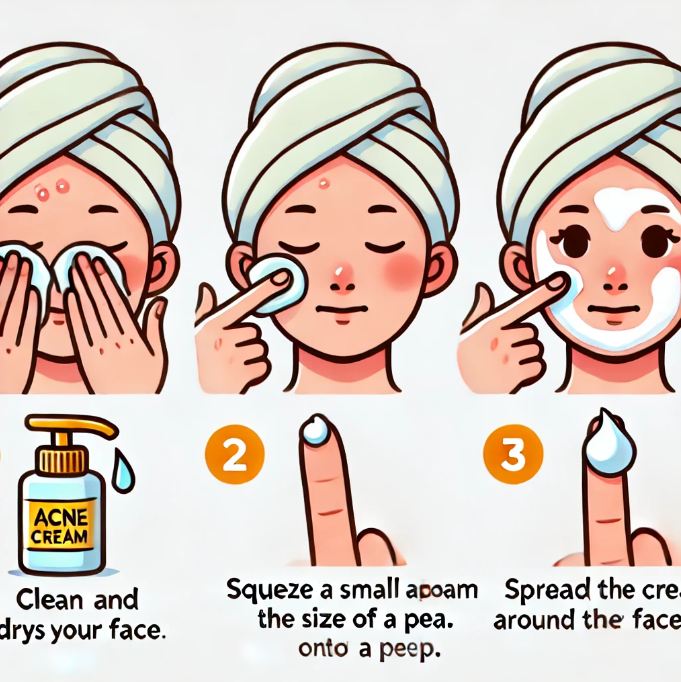
Timing and Frequency of Use
Applying Adapalene gel is typically recommended once a day in the evening. This timing allows it to work overnight when the skin naturally undergoes repair processes. Using it regularly as part of your nightly skincare routine helps maximize its benefits. It promotes skin without overexposing it to sunlight, which could worsen sensitivity caused by the exfoliating effects of the retinoid.
Side Effects and Adverse Reactions
Common Side Effects Encountered
Though it works well, Adapalene gel can lead to some side effects. Typical responses may involve skin dryness, redness, and irritation in the first few weeks of use. Users might also feel a burning or stinging sensation when applying it, but this usually decreases as the skin gets used to the product.

Managing Mild Reactions at Home
- Keeping your skin hydrated regularly with a comedogenic moisturizer can ease dryness and flaking.
- Apply gel every other night to lessen skin irritation until your skin adjusts.
- Remember to shield your skin from the sun and apply sunscreen with an SPF of 30 or higher to prevent increased skin sensitivity and harm.
Signs of Severe Reactions and Steps to Take
While not frequent, severe reactions should be addressed promptly. Signs like stinging, eye or lip swelling, and significant skin discoloration suggest an allergic response or chemical irritation. If these symptoms arise, it is recommended that you stop using adapalene and seek advice from a dermatologist without delay.
Adapalene Purge
In the weeks after using adapalene gel, some individuals might undergo a phase known as a "purge," during which skin issues may appear to worsen as acne spots emerge quickly. This occurrence is usually attributed to the turnover of skin cells, which leads to the quicker emergence of existing blocked pores.
Adapalene Skin Peeling
Peeling of the skin commonly occurs as a result of adapalene's exfoliating properties. Although it may seem alarming, it usually indicates that the product works effectively by sloughing off skin cells and encouraging the growth of new, healthier skin growth below.
Adapalene Side Effects Long Term
Using adapalene for a period is usually deemed safe. Nonetheless, certain people might encounter lasting side effects like changes in skin color or inflammation. Regular appointments with a dermatologist can assist in handling these effects and modifying treatment as needed to uphold skin well-being and treatment effectiveness.
Important Precautions
Pre-Application Skin Care Routines
Before using gel, it is essential to clean your skin gently with a mild, nonirritating cleanser. Avoid exfoliating cleansers to avoid further irritation. Once you've cleansed, ensure your skin is dehydrated to help the medication absorb better and work effectively.
Sun Exposure and Adapalene
Adapalene can make your skin more sensitive to sunlight, making sunburn easier. It's essential to use a spectrum sunscreen with an SPF of 30 or higher daily and wear protective clothing. Reducing sun exposure during peak hours is also advisable when using this medication.
Cosmetic and Other Topical Interactions
- It's best to avoid products that contain a lot of alcohol, astringent, or spices because they can exacerbate skin irritation.
- If you're using acne treatments along with adapalene, do so carefully and only as directed by a healthcare provider to prevent your skin from overloading with chemicals.
Specific Administration Considerations
Administration to Elderly
Although adapalene is usually well tolerated, older patients might need to adjust the frequency and dosage because of variations in skin elasticity and moisture levels. To maximize the effectiveness of treatment, it's recommended to watch for skin irritation and dryness.

Adjustments in Application and Dosages
Changes might need to be made depending on how they react to the treatment and how well they can tolerate it. Someone with the skin might need a lower strength or less frequent treatment application. Healthcare professionals could recommend starting with an amount and increasing gradually as the skin gets used to it.
Monitoring and Ongoing Assessment
It's important to have checkups to see how well the adapalene treatment is working and if the patient can tolerate it. These appointments allow for any needed changes to the treatment plan, making sure that the patient's skincare routine continues to be both effective and safe.
Administration to Pregnant Women and Nursing Mothers
Adapalene is classified as pregnancy category C, which means that the potential risk to the fetus is uncertain. It is recommended for women or those considering pregnancy to seek advice from a healthcare provider before using adapalene. Nursing mothers should also be cautious since it is unclear whether adapalene is passed into breast milk.
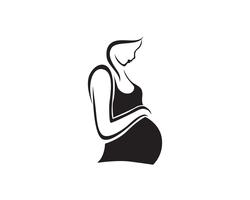
Safety Profile and Clinical Recommendations
Adapalene is considered to be quite safe, especially when compared to retinoids. In practice, it is commonly advised to begin treatment with the lowest effective dosage and carefully watch for any indications of skin irritation or hypersensitivity.
Alternatives and Risks
For individuals who experience sensitivity to adapalene, other options, such as benzoyl peroxide or topical antibiotics, could be explored. It's essential to weigh the risks associated with each alternative against the advantages, ideally in discussion with a dermatologist.
Administration to Children
Adapalene can be applied to kids who are 12 years old and above to treat acne. Guidelines tailored for age groups help in using it correctly, emphasizing gentle application and keeping an eye out for any negative reactions. Parents play a role in guiding children to follow the treatment plan effectively.

Parental Guidance and Supervision Requirements
When teenagers are given adapalene, it's important for parents to oversee how it is applied to ensure it is used correctly and to watch out for any skin reactions. This supervision is key to ensuring the treatment is applied consistently and preventing any misuse or excessive use of the medication.
Handling Overdosage
Symptoms of Adapalene Overdose
Taking too much adapalene gel is unlikely to have widespread effects on the body because it is absorbed minimally. However, if you use too much on your skin, it can cause significant irritation, such as redness, peeling, discomfort, and potentially swelling.
Immediate Actions and Medical Interventions
- It's important to stop using the product away to prevent more skin irritation.
- You can use compresses on the irritated areas to ease discomfort and lessen redness.
- Talk to a healthcare provider to determine whether additional medical treatment, such as topical corticosteroids, is necessary for severe inflammation.
Prevention Tips for Future Applications
Following the recommended doses and applying the product carefully is crucial to avoiding overdosing. It's essential to adhere to the usage instructions given by your healthcare provider, such as using an amount equivalent to a pea for your whole face and refraining from applying it too often.
Storage and Handling Precautions
Optimal Storage Conditions to Maintain Efficacy
Adapalene gel should be stored at room temperature, away from sunlight and heat, to prevent the active ingredients from breaking down. The cap should be closed to prevent the gel from drying out.

Disposal of Expired or Unused Gel
When you no longer need it or if the adapalene gel has expired, it's essential to dispose of it to prevent environmental harm. Avoid flushing it down the toilet or pouring it into a drain. It's better to inquire at pharmacies or recycling centers about participating in a medication take-back program.
Safety Measures to Prevent Accidental Exposure
It's important to store adapalene gel away from children and pets to avoid accidental ingestion or contact that could cause harmful reactions. Also, make sure to follow the directions for using the gel and wash your hands after applying it to avoid spreading it to sensitive areas, like the eyes or mouth.
Drug Interactions
Common Drug Interactions with Adapalene
Adapalene might interact with topical treatments, especially those that include sulfur, resorcinol, or salicylic acid, potentially causing heightened skin irritation. It is recommended to avoid using retinoids, whether topical or oral, simultaneously to avoid potential side effects and a higher risk of adverse reactions.
Impact on Efficacy and Safety
Interactions with substances could change how well adapalene works by impacting its absorption or speeding up its breakdown. These interactions might also impact adapalene's safety, potentially causing increased sensitivity or severe skin reactions.
Managing Polypharmacy in Dermatological Care
When patients need dermatological treatments, handling multiple medications with care is essential. This includes organizing treatment schedules to avoid conflicts, carefully observing skin reactions, and adjusting the treatment plan based on input and medical results.
Warnings and Contraindications
Specific Contraindications for Use
Adapalene gel should not be used by patients who are allergic to it or its ingredients. It is also important to be cautious when using it on individuals with eczema skin, as it could worsen their condition by causing skin irritation and dryness.

Warning Signs for Discontinuing Treatment
- Stop using it immediately if you experience itching, redness, swelling, or blistering on your skin while using adapalene. These signs indicate that it may not be the right fit for you.
- In case of reactions like trouble breathing or facial swelling, seek medical help promptly.
Legal and Medical Advisories
To reduce the chances of adverse outcomes, it's essential to follow the instructions of a healthcare professional when using gel. Patients need to be informed about the possibility of their skin condition worsening, a phase called "reionization," which usually improves as the skin gets used to the treatment.
Conclusion
Summary of Key Points about Adapalene Gel
Adapalene gel, a man-made retinoid, is mainly utilized to treat acne vulgaris. It also helps enhance skin texture and pigmentation and may be used off-label for treating skin conditions not related to acne. The gel is recognized for its ability to decrease inflammation and encourage cell regeneration without causing the harsh side effects associated with other retinoids.
Final Thoughts on Its Role in Dermatological Treatments
Adapalene gel is widely used in dermatology for its gentle approach, making it a popular choice among patients looking for gentle treatment. It is well known for its effectiveness in managing acne and is also showing potential for broader uses in dermatology.
Future Directions in Research and Application
Research is expected to progress, leading to ways adapalene can be used for treatment. It will be examined for its possibilities in aging solutions, how it affects photoaging, and how it can help with various skin conditions. Different ingredients are created with versions and mixtures, and adapalene will remain important in skin treatments.
Adaferin, Adapalene Topical Gel FAQ
- What is Adapalene
- What not to mix with Adapalene
- What can you use with Adapalene
- What happens if you use expired Adapalene
- What is the difference between Adapalene and Tretinoin
- When does Adapalene start working
- When to apply Adapalene gel in skincare routine
- When to stop using Adapalene
- Does Adapalene help with wrinkles
- Does Adapalene help with Hyperpigmentation
- Does Adapalene cause purging?
- Does Adapalene bleach clothes?
- Does Adapalene expire?
- Can I use Salicylic Acid in the morning and Adapalene at night
- Can you use Adapalene and Benzoyl Peroxide together?
- Can I use Hyaluronic Acid with Adapalene?
- How to start Adapalene
- How long does Adapalene purge last
- How long for Adapalene to work
- How to use Adapalene gel with moisturizer
- How long should I wait to apply moisturizer after Adapalene
- How long does it take to see results from Adapalene
- How to use Benzoyl Peroxide and Adapalene together
- Is Adapalene a Retinol?
- Is Adapalene the same as Tretinoin?
- Is Adapalene good for wrinkles?
- Is Tretinoin better than Adapalene?
- Is Adapalene stronger than Retinol?
What is Adapalene
Adapalene, a treatment commonly used for acne, is classified as a retinoid drug derived synthetically from vitamin A. Its mechanism involves influencing cell growth and reducing inflammation, thereby aiding in the management of acne. Adapalene helps prevent acne breakouts and supports the skin's healing process following acne-related damage by facilitating skin cell turnover and promoting exfoliation.
Adapalene is available in various formulations, including gels, creams, and lotions. It is typically applied to clean, dry skin once a day, especially at night. Adapalene can lead to some side effects, most commonly skin irritation, redness, and dryness, particularly during the initial weeks of treatment. However, these effects usually decrease with continued use as the skin adjusts to the medication.
This medication is often used as part of a comprehensive acne treatment plan, potentially in combination with other topical or oral treatments, depending on the severity of the acne. Users must follow their healthcare provider's instructions closely when using Adapalene to maximize its benefits and minimize potential side effects.
What not to mix with Adapalene
When utilizing Adapalene to treat acne, exercise care when combining it with other products and medications to prevent adverse reactions or reduced efficacy. Here are some substances and types of products that are typically not recommended to be used with Adapalene:
1. Other Topical Acne Treatments:
- Benzoyl Peroxide: Although Adapalene can be used with benzoyl peroxide, it should be done under medical supervision, as combining them without guidance can lead to increased skin irritation.
- Salicylic Acid: This can also cause additional dryness and irritation when used with Adapalene.
2. Harsh Exfoliants:
- Physical exfoliants (like scrubs) and chemical exfoliants (like glycolic acid or alpha hydroxy acids) can exacerbate skin irritation when used with Adapalene.
3. Alcohol-based Products:
- Toners, astringents, and cleansing products containing a high alcohol concentration should be avoided, as they can further dry out and irritate the skin.
4. Astringent and Drying Agents:
Products formulated to dry out the skin (often used to treat oily skin) can lead to excessive dryness and irritation when combined with Adapalene.
5. Certain Skincare Ingredients:
- Vitamin C: High concentrations of Vitamin C may irritate the skin when used with Adapalene.
- Retinoids: Other retinoids (like tretinoin) alongside Adapalene can overstress the skin, leading to severe irritation.
6. Photosensitizing Agents:
- Some medications and skin care products can increase your skin's sensitivity to sunlight, which is already a concern when using Adapalene.
Before starting treatment with Adapalene, it's essential to consult with a healthcare provider or dermatologist about all the products and medications you are currently using. They can provide personalized advice based on your skin type and health history, ensuring the safe use of all skin care treatments together.
What can you use with Adapalene
When using adapalene to treat acne, skin care products and medications that work well with it to boost its effectiveness and reduce irritation are helpful. Here are some suggestions for products and ingredients that can be used alongside adapalene:
1. Gentle Cleansers:
- Use mild, non-soap cleansers that do not strip the skin's natural oils, which can help reduce irritation associated with adapalene use.
2. Moisturizers:
Hydrating moisturizers, particularly those containing ceramides, hyaluronic acid, or glycerin, can help alleviate dryness and irritation. To avoid clogging pores, choose fragrance-free and non-comedogenic options.
3. Sunscreen:
- Sunscreen is essential while using adapalene due to increased sun sensitivity. Use a broad-spectrum sunscreen with an SPF of 30 or higher daily, even on cloudy days.
4. Benzoyl Peroxide:
- Adapalene can be used with benzoyl peroxide, which can enhance acne treatment by targeting different aspects of acne formation. Some formulations combine adapalene and benzoyl peroxide in a single product, which can be convenient and reduce the risk of irritation.
5. Antibiotics (topical and oral):
- Adapalene may be combined with antibiotics for more severe acne to help reduce bacteria and inflammation. Always use antibiotics as prescribed by a healthcare provider.
6. Niacinamide:
- Niacinamide is a form of vitamin B3 that can help strengthen the skin's barrier, reduce inflammation, and improve skin texture and tone without irritating.
7. Soothing Ingredients:
- Products containing aloe vera, allantoin, or colloidal oatmeal can help soothe and calm irritated skin.
When integrating new products into a skincare regimen that includes adapalene, it's essential to do so gradually and monitor the skin's response to avoid overloading it with active ingredients. Starting with adapalene every other night and slowly increasing to nightly use as tolerated can also help reduce the risk of irritation. Always consult a dermatologist to tailor the products to your skin type and needs.
What happens if you use expired Adapalene
It is not advisable to use expired adapalene, like any other expired medication, as it may cause effectiveness and safety concerns. Here are a few potential outcomes of using expired adapalene:
1. Reduced Effectiveness:
- The active ingredients in adapalene may degrade over time, particularly if the product has been exposed to heat, light, or air. This degradation can result in a less effective product, meaning you might not see the desired results in terms of acne treatment.
2. Increased Risk of Irritation:
- As the formulation breaks down, it can change in ways, making it more irritating to the skin. This could lead to increased redness, dryness, or irritation compared to using a non-expired product.
3. Potential for Bacterial Growth:
- Although less common in topical medications like adapalene, expired products may be more susceptible to bacterial growth, significantly if the integrity of the packaging has been compromised.
4. Unknown Chemical Stability:
- Over time, the chemical stability of adapalene can be affected, which might lead to the formation of breakdown products. The effects of these byproducts on the skin are not well documented, which introduces an element of risk.
It’s best to check the expiration date on your Adapalene product before use. If it has expired, consider disposing of it safely and obtaining a new supply. If you have concerns about an expired medication or its effects on your skin, consult a healthcare provider or pharmacist for guidance.
What is the difference between Adapalene and Tretinoin
Adapalene and tretinoin are two types of retinoids commonly prescribed for treating acne. While they serve a purpose, they differ distinctly in their chemical compositions, potential side effects, and recommended applications. Let's delve into a comparison:
1. Chemical Structure:
- Adapalene is a synthetic third-generation retinoid. It is more chemically stable, making light and oxygen exposure more tolerable.
- Tretinoin is a first-generation retinoid, chemically closer to natural vitamin A. It is less stable when exposed to light and air, affecting its effectiveness.
2. Mechanism of Action:
- Both adapalene and tretinoin modulate cellular processes that involve cell differentiation and inflammation. However, adapalene binds to specific types of retinoic acid receptors (RARs), primarily the beta and gamma forms, which may account for its more targeted action and reduced irritation.
- Tretinoin affects all types of RARs, which may explain its broad range of effects and higher potential for irritating.
3. Efficacy:
- Both are effective for acne treatment but may work better for different acne or skin types. Tretinoin is often used for more severe cases of acne and is also widely used for its anti-aging effects due to its more potent impact on skin cell turnover.
- Adapalene is often preferred for milder acne and is noted for being better tolerated, making it a good choice for those with sensitive skin.
4. Side Effects:
- Adapalene tends to cause less irritation, redness, and peeling than tretinoin, which can benefit those with sensitive or easily irritated skin.
- Tretinoin can cause more noticeable side effects, including dryness, redness, and peeling. These effects may be more pronounced but can significantly improve skin texture and appearance over time.
5. Usage:
- Both are applied topically but may come in different concentrations and formulations (gels, creams, lotions). The choice between a gel or cream can depend on skin type; gels are generally better for oily skin, while creams are suited for dry or sensitive skin.
6. Availability:
- Tretinoin often requires a prescription, depending on the country and the concentration. Adapalene is over-the-counter in lower concentrations, making it more accessible for mild to moderate acne treatment.
When deciding between adapalene and tretinoin, consider the severity of acne, skin type, potential side effects, and personal tolerance to retinoids. Consulting with a dermatologist can help tailor the treatment to your needs and ensure the best outcomes with these potent skincare agents.
When does Adapalene start working
Adapalene typically starts working on acne within a few weeks of use, with the complete advantages usually becoming noticeable after undergoing treatment for a more extended period. Here is an overview of the expected progression when incorporating adapalene:
1. Initial Weeks (1-4 Weeks):
- During the first few weeks of treatment, you might not notice a significant improvement in your acne. Some users experience what is known as a "pure"e," wh," where acne can initially appear worse due to the medication accelerating the turnover of skin cells. This process brings underlying pimples to the surface.
2. Mid-Treatment (4-8 Weeks):
- By this time, you may start to see noticeable improvements. The number of acne lesions typically begins to decrease, and overall skin texture may start to improve.
3. Full Effects (8-12 Weeks):
- It generally takes about 8 to 12 weeks to see the full benefits of adapalene. The appearance is likely to be more explicit, with fewer breakouts. This improvement might be gradual and enhanced with continued use for some individuals.
4. Long-term Use:
Adapalene's benefits are often maintained through continued use. If acne completely resolves, some individuals may use it less frequently to maintain results, but this should be done under the guidance of a healthcare provider.
A healthcare provider must use Adapalene consistently to achieve the best results. If irritation occurs, it might be necessary to adjust the frequency of application or use a moisturizer to help mitigate side effects. If there is improvement after 12 weeks or if the skin condition worsens significantly, consulting a dermatologist for an adjusted treatment plan is recommended.
When to apply Adapalene gel in skincare routine
Adapalene, a retinoid, is commonly prescribed for acne treatment. It belongs to the retinoids group of drugs derived from vitamin A. Its mechanism involves controlling skin cell turnover to combat acne formation by clearing pores and decreasing inflammation.
When to stop using Adapalene
You might want to think about discontinuing the use of Adapalene in the following situations:
1. Severe Irritation or Allergic Reaction: If you experience severe redness, swelling, blistering, or an allergic reaction (such as hives, itching, or difficulty breathing), discontinue use immediately and consult a healthcare provider.
2. No Improvement After Several Months: If you have been using Adapalene consistently for 3 to 6 months and have seen little to no improvement in your acne, it might be time to consult your dermatologist to reassess your treatment plan. They may recommend an alternative treatment or a different medication.
3. Persistent Side Effects: If side effects like excessive dryness, peeling, or irritation persist even after the initial adjustment period (usually 4-6 weeks), it may indicate that Adapalene is too harsh for your skin type.
4. Achieved Desired Results: Once your acne has cleared and your skin is stable, your dermatologist may advise reducing the frequency of use or stopping Adapalene. However, many continue using it as a maintenance treatment to prevent future breakouts.
5. Pregnancy or Planning Pregnancy: If you become pregnant or plan to become pregnant, contacting your doctor is essential, as retinoids like Adapalene are generally not recommended during pregnancy.
Before stopping using Adapalene, it’s best to consult a dermatologist. They can guide patients through the discontinuation process and safely suggest alternative options if necessary.
Does Adapalene help with wrinkles
Certainly, Adapalene has the potential to address wrinkles. While its main purpose is acne treatment, Adapalene falls under the category of retinoids, similar to tretinoin, which is known for its ability to diminish fine lines and wrinkles.
Does Adapalene help with Hyperpigmentation
Adapalene has been known to be beneficial for dealing with hyperpigmentation. Although its primary purpose is to combat acne, its capacity to enhance cell renewal and diminish inflammation has proven effective in treating hyperpigmentation issues such as inflammatory hyperpigmentation (PIH) and melasma.
Does Adapalene cause purging?
Certainly! Adapalene may lead to purging, which is a typical initial response when beginning treatment with a retinoid such as Adapalene. This happens because the medication speeds up the shedding of skin cells.
Does Adapalene bleach clothes?
Adapalene doesn't bleach clothes like benzoyl peroxide does. Let the gel or cream thoroughly soak into your skin before getting dressed, as any skincare product can stain or leave residue on fabrics if not absorbed properly.
Does Adapalene expire?
Sure, Adapalene does have an expiration date. Similar to medicines, Adapalene's expiration date signifies the timeframe within which the manufacturer assures its effectiveness and safety.
Can I use Salicylic Acid in the morning and Adapalene at night
You can apply Salicylic Acid in the morning and use adapalene at night. This duo is known to work for acne treatment, but remember to keep an eye on how your skin reacts, as it might get irritated.
Can you use Adapalene and Benzoyl Peroxide together?
Yes, you can use adapalene and benzoyl peroxide together, and they are often combined in acne treatments. Adapalene is a type of retinoid that helps regulate skin cell turnover and reduce inflammation, while benzoyl peroxide has antibacterial properties and helps prevent pores from becoming clogged.
Using them together can effectively manage acne, particularly in moderate to severe cases. Prescription and over-the-counter products combine these two ingredients because they can work synergistically to improve acne more effectively than when used alone.
However, using these products correctly is essential to minimize potential side effects such as dryness, redness, and irritation. Starting with lower concentrations, gradually increasing usage, and following the directions provided by a healthcare provider or on the product labeling can help manage these side effects.
Can I use Hyaluronic Acid with Adapalene?
Certainly! It is entirely safe to use Hyaluronic Acid alongside Adapalene, and combining the two can benefit your skin.
How to start Adapalene
When you begin using Adapalene, it can work well in treating acne if you follow the proper steps. Here is a detailed guide to help you through it:
1. Consult a Dermatologist: Before starting Adapalene, it’s advisable to consult a dermatologist, especially if you have sensitive skin or other skin conditions.
2. Choose the Right Product: Adapalene has different strengths, typically 0.1% and 0.3%. Your dermatologist can recommend the appropriate strength for your skin type and acne severity.
3. Begin with a Clean Face: Wash your face with a gentle, non-comedogenic cleanser. Pat your skin dry with a soft towel.
4. Apply a Pea-Sized Amount: After cleansing and drying your skin, apply a pea-sized amount of Adapalene to the affected areas at night. Gently spread it in a thin layer, avoiding sensitive areas like the eyes, lips, and corners of the nose.
5. Start Slowly: To minimize irritation, use Adapalene every other night or 2-3 times weekly. Gradually increase to nightly use as your skin builds tolerance.
6. Moisturize: After allowing the Adapalene to absorb for 10-15 minutes, apply a non-comedogenic moisturizer to help prevent dryness and irritation.
7. Use Sunscreen Daily: Adapalene can make your skin more sensitive to the sun. To protect your skin, apply a broad-spectrum sunscreen (SPF 30 or higher) every morning, even on cloudy days.
8. Be Patient and Consistent: Results may take 8-12 weeks to appear. Consistency is vital, so continue using Adapalene regularly, even if you experience initial purging or irritation.
9. Monitor Your Skin: If you experience severe irritation, dryness, or any allergic reactions, consult your dermatologist. They may recommend adjusting the frequency of application or switching to a lower concentration.
Starting Adapalene gradually and combining it with a good skincare routine can help you achieve the best results with minimal side effects.
How long does Adapalene purge last
The initial phase of purging when using Adapalene, a retinoid, mainly for acne treatment usually spans 4 to 8 weeks. During this period, the medication speeds up the shedding of skin cells, potentially causing blocked pores to emerge and leading to more breakouts.
However, the duration of the purging phase can vary depending on individual skin types, the severity of acne, and how the skin responds to the treatment. If purging lasts longer than eight weeks or the skin's condition worsens significantly, it is advisable to consult a dermatologist to evaluate the treatment plan.
How long for Adapalene to work
Adapalene usually takes 8 to 12 weeks to visibly improve acne. The time frame may differ depending on the skin type, the seriousness of the acne, and how regularly the product is used.
During the first few weeks, it’s common to experience irritation or increased breakouts (purging) as the skin adjusts to the medication. After this initial period, most users see gradual improvements, with clearer skin and reduced acne over the following weeks. For some individuals, full results may take up to six months. Consistency in application is crucial for achieving the best results.
How to use Adapalene gel with moisturizer
For results when using Adapalene gel along with a moisturizer, follow these guidelines:
1. Cleanse Your Face: Wash your face with a gentle, non-comedogenic cleanser. Pat your skin dry with a soft towel.
2. Wait for Your Skin to Dry: Ensure your skin is dehydrated before applying Adapalene. This helps minimize irritation, as applying Adapalene on damp skin can increase absorption, potentially leading to more irritation.
3. Apply Adapalene Gel: Squeeze a pea-sized amount of Adapalene gel onto your fingertip. Apply a thin layer to the affected areas, avoiding the eyes, lips, and broken skin.
4. Wait for the Gel to Absorb: Allow the Adapalene gel to absorb into your skin for 10-15 minutes. This reduces the likelihood of irritation when applying moisturizer afterward.
5. Apply a Moisturizer: After the Adapalene gel has been absorbed, apply a non-comedogenic, hydrating moisturizer to your entire face. This helps to soothe the skin and counteract dryness or irritation with Adapalene use.
6. Use Sunscreen During the Day: If using Adapalene at night, apply sunscreen during the day, as retinoids can make your skin more sensitive to the sun.
Following this routine, you can effectively use Adapalene gel while minimizing potential irritation and dryness.
How long should I wait to apply moisturizer after Adapalene
Wait 10 to 15 minutes after using Adapalene before putting on moisturizer. This break gives the Adapalene time to soak into your skin thoroughly, which helps minimize the chance of irritation if you apply moisturizer too quickly. Apply your moisturizer once this time has passed to keep your skin calm and well-hydrated.
How long does it take to see results from Adapalene
It usually takes 8 to 12 weeks to observe visible improvements when using Adapalene. The duration may differ based on factors such as the extent of your acne, your skin type, and how regularly you apply the product.
During the first few weeks, you may experience an increase in breakouts (purging) as the medication speeds up the turnover of skin cells. This is normal and usually subsides after a few weeks. Gradual improvements in acne should start to become visible after about 2 to 3 months of consistent use, with the best results often seen after 3 to 6 months.
How to use Benzoyl Peroxide and Adapalene together
Combining peroxide and Adapalene can effectively treat acne, but it's crucial to introduce them cautiously into your skincare regimen to prevent excessive irritation. Here is a helpful guide, on how to incorporate both products:
1. Start Slowly:
- If you're new to either benzoyl peroxide or Adapalene, it's best to introduce them gradually to allow your skin to adjust. Start using one product and wait a week or two before introducing the other.
2. Use Benzoyl Peroxide in the Morning:
- Morning Routine:
- Cleanse: Wash your face with a gentle, non-comedogenic cleanser.
- Apply Benzoyl Peroxide: Use a benzoyl peroxide product (typically 2.5% to 5%) on the areas affected by acne. Apply a thin layer and let it absorb.
- Moisturize: Follow with a non-comedogenic moisturizer to keep your skin hydrated.
- Sunscreen: Apply a broad-spectrum sunscreen with at least SPF 30, as benzoyl peroxide can increase sun sensitivity.
3. Use Adapalene at Night:
- Evening Routine:
- Cleanse: Clean your face with a gentle cleanser and pat dry.
- Apply Adapalene: After completely drying the skin, apply a pea-sized amount of Adapalene to the affected areas. Spread it evenly and avoid sensitive areas like the eyes, lips, and corners of the nose.
- Moisturize: After Adapalene has been absorbed (usually after 10-15 minutes), apply a non-comedogenic moisturizer to help prevent dryness and irritation.
4. Monitor Your Skin:
- Adjust Frequency if Needed: If you experience significant irritation, redness, or peeling, you may need to reduce the frequency of application. For instance, you could use benzoyl peroxide every other Morning or Adapalene every other night until your skin adjusts.
- Moisturize More Frequently: If your skin becomes dry, use a heavier moisturizer or apply it more frequently.
5. Consult Your Dermatologist:
- Seek Professional Advice: If you are unsure how to incorporate both products into your routine or experience persistent irritation, consult your dermatologist. They may suggest alternating days or using a lower concentration of one or both products.
Summary:
- Morning: Cleanser → Benzoyl Peroxide → Moisturizer → Sunscreen
- Evening: Cleanser → Adapalene → Moisturizer
This combination of benzoyl peroxide and Adapalene can be highly effective for acne treatment. It offers the benefits of both antibacterial action and cell turnover enhancement. Just introduce them gradually and monitor your skin's response to the treatment.
Is Adapalene a Retinol?
Adapalene differs from retinol. It belongs to the same family of retinoids.
Is Adapalene the same as Tretinoin?
Adapalene and Tretinoin belong to the retinoids family, yet they exhibit variations in their chemical composition, strength, and intended applications.
Is Adapalene good for wrinkles?
Certainly, Adapalene can offer advantages in addressing wrinkles, even though its main focus is on aiding with acne issues. Adapalene falls under the category of retinoids, giving it characteristics similar to those of other retinoids like Tretinoin, which are frequently employed in skincare to combat signs of aging.
Is Tretinoin better than Adapalene?
Determining whether Tretinoin or Adapalene is more suitable for you involves considering your skin needs, objectives, and tolerance for retinoids. While both are retinoids, they vary in their strengths, applications, and possible adverse reactions.
Is Adapalene stronger than Retinol?
Sure, Adapalene is typically seen as more potent than retinol.





